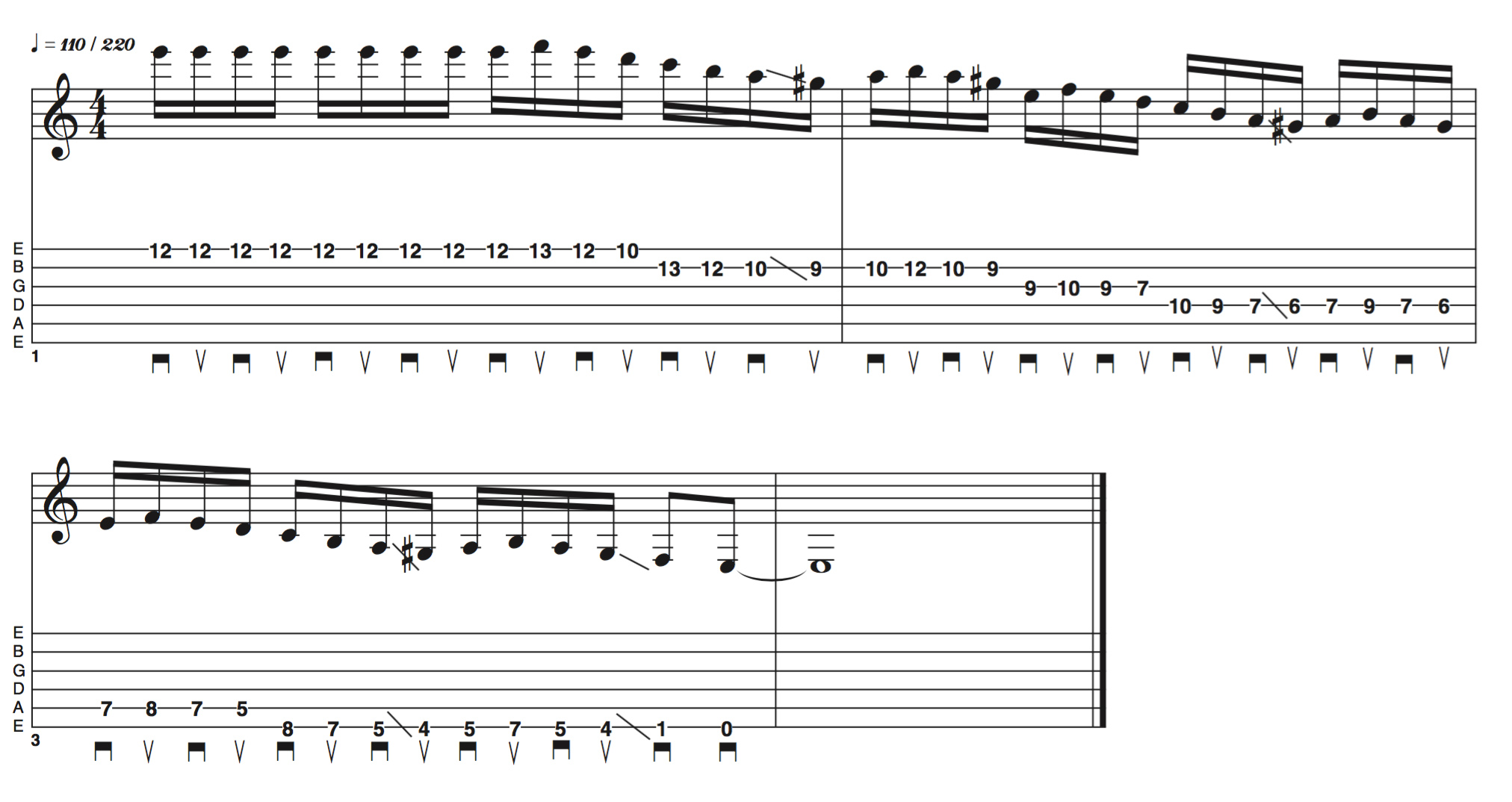Speed up your leads with this Yngwie Malmsteen-style workout
This neoclassical shred lesson from Aussie fretboard gymnast Chris Brooks will build speed through economy and alternate picking

In this lesson, we’re looking at three ways Yngwie Malmsteen changes strings and how his picking orientation serves those various approaches.
The first is the Even Numbers strategy. With our pick orientation in place, escaped upstrokes make it possible to go to a lower or higher string on the next downstroke without obstacle. The best way to maximise that string-changing potential is to have a whole bunch of even-numbered alternate picking licks set up for it.
Example 1 expands on the E Phrygian Dominant lick with which we finished last month’s lesson. We now have a three-octave fire-breathing lick that is perfect for alternate picking and hassle-free string changes. The eight tremolo-picked notes in the first two beats of bar 1 help to prime the pump – getting your picking hand in motion before engaging more notes.
Pro tip: use the same fingering for each octave of the lick.
Happy shredding!
Example 1. Escaped and planted pick strokes
The maths of an even numbers system means that whether there are two, four, six or eight notes on a string, each string change involves an ‘escaped’ upstroke followed by a ‘planted’ downstroke. It’s a perfect option for ascending and descending Pentatonic scales too.
Example 2. Ascending and descending in odd numbers
Example 2 uses all those numbers in an A Harmonic Minor descending and ascending phrase. Odd numbers of notes per string require changes to picking orientation when alternate picking.
All the latest guitar news, interviews, lessons, reviews, deals and more, direct to your inbox!
Yngwie, being Yngwie, has developed separate strategies for both ascending and descending odd numbers which create an asymmetrical yet stylistic approach with contrasting sounds.
Example 3. Ascending lines
For ascending odd numbers, Yngwie calls upon the power of sweep picking. Maintaining DPO, the downstroke that occurs on the last note of any odd numbered group (here, therefore, three notes per string) is used to push through and begin the next string, as seen here.
Avoid doing this with two separate downstrokes. As you add or subtract strings from a pattern, the pick strokes assigned to each string remain the same.
Example 4. Yngwie's descending odd numbers strategy
Example 4 takes the idea through more string changes using the A Natural Minor scale. Using this double downstroke is called economy picking, but Yngwie is strictly a one-way economy picker – ascending only. Whereas someone like Frank Gambale economy picks in both directions and switches picking orientation to suit each one, Yngwie has a separate descending odd numbers approach.
Example 5. Using pick-gato
Pick-gato uses alternate picked notes for the even numbered bulk of any string, then a pull-off (legato) is used to take care of the odd man out. This means that picking lines still begin on downstrokes and conclude on escaped upstrokes like the ‘Evens Strategy'.
Example 6. Mixing the three picking strategies
Let’s finish with an A Harmonic Minor line containing all three string changing approaches: alternate picking evens, economy picked odds, and pick-gato odds.
This article features content from Chris Brooks' book Neo Classical Speed Strategies For Guitar, published by Fundamental Changes.






